Five Tips for Making Your Treadmill Desk More ‘Green’
Like most reviews sites, our editorial staff and laboratory testing expenses are partially offset by earning small commissions (at no cost to you) when you purchase something through those links. Learn More

At WorkWhileWalking we’re often asked how much electricity treadmill desks consume, and whether the fact that they consume a lot of energy makes them an environmentally unfriendly form of exercise. Like many things in life the answer is complicated. Let’s cut through the mythology and get down to the facts – they will probably surprise you!
First let’s discuss how much electricity your treadmill desk consumes. Even if you have an electric height-adjustable desk you can disregard its power consumption in the big picture because you’ll only be activating that motor for less than a minute a day. Logically, the big power draw will come from the treadmill itself when it’s running.
Some treadmill models like the Unsit and the Lifespan units have an automatic shut off when you stop walking, which will definitely save on the electric bill. The parasitic power draw on any idle treadmill will typically be less than 10 watts, but if even that bothers you just flip the power switch off after each walking session, or plug the treadmill and your computer equipment into a high-amperage switched power strip that you can reach more easily.
Conventional running treadmills typically consume between 750 and 1500 watts at full speed. While we’ve written a lot about how the load on the motor at walking speeds is much higher than at running speeds, as far as energy consumption is concerned the relationship between belt speed and electricity is fairly linear – the faster you go the more electricity the motor will draw. A true walking treadmill (one that’s designed with a top-end speed of between 2 mph and 2.5 mph) will consume less electricity at lower speeds because it is more efficiently geared to the RPM range you’ll be in most of the time.
The treadmill motor will have to work harder to overcome friction with a heavy football jock weighing down the belt than a dainty ballerina. Its work will ease up a bit if the treadmill is on even a slight incline. The bigger the incline the more assistance it will get from the Earth’s gravity. Typing while walking will also reduce the load on the motor somewhat because you tend to push backwards on the belt with each step while tethered to a keyboard.
Another important factor is the amount of friction that exists between the belt and the board. Most people don’t ever bother to regularly lubricate their treadmill boards, which is a big mistake. Reducing friction is the key not only to the longevity of the motor, board and belt but also to minimizing the treadmill’s power consumption. A small investment in a lubrication kit (usually a silicon spray, depending on what is recommended by the manufacturer of your treadmill) will pay huge dividends in the ownership costs of your treadmill desk. See our comprehensive guide to lubricating your treadmill.
Simply lubricating your treadmill can reduce its power consumption (and strain on the motor) by 10% to 30%, if not more. A $24 kit will pay for itself in less than a year on electricity savings alone, not to mention the avoidance of a potential costly motor replacement. While there are many even cheaper lubricants on the market this is one item you don’t want to skimp on. Better formulations will be made of 100% silicone oil and be a blend of different viscosities.
The treadmill deck is a laminated product and friction increases when this lamination begins to break down. Sheer stresses from walking on the board contribute to the delamination process. This is why professional gyms replace the boards in their treadmills every 24 – 48 months. Higher-quality treadmills often have double-sided lamination so their boards can be flipped over to double their useful life. Low-end treadmills often use boards that are too thin and are more subject to sheer stresses, so especially if you are a heavier individual don’t trust any treadmill that is too easy to lift. See our article on what’s behind treadmill weight ratings.
Given all these variables in the equation, calculating the precise power consumption of your treadmill desk is very difficult while actually measuring it directly is extremely easy. With this very inexpensive Kill-A-Watt Power Meter you can figure out exactly how much power your treadmill draws at different speeds and with individuals of different heft walking upon it. You can also see the impact on the power consumption of punching in even a ½% or 1% incline. (The Kill-A-Watt is also a great device to have on hand to measure the power consumption of any electrical device in your home or office if you want to pinpoint the ones that are hogging most of your electricity.)
[Editor’s Note: Remember that to get the greatest health benefit from your treadmill desk you don’t want to set the incline so high as to raise your heart rate about the “NEAT” range, so if you raise the incline you may need to slow your walking speed to maintain the proper heart rate. As Dr. James Levine of the Mayo Clinic elaborates in his book Move A Little, Lose A Lot, using a treadmill desk is about engaging in Non-Exercise Activity Thermogenesis (“NEAT”), which affords numerous health and productivity benefits that are complementary to, yet completely distinct from, real aerobic exercise.]
To calculate your energy costs simply multiply the average power consumption that you measured while walking at your average “working speed” by the number of hours you use your treadmill desk daily, and then multiply by the kW-hr rate on your utility bill (the national average is around $0.10 per kW-hr) and divide by 1000.
For example if you walk an average of 3 hours per day at a flat incline and an average speed of 1.5 mph and your power meter shows this to be a 1,200 watts-per-hour electricity consumption then
1200 x 3 / 1000 = 3.6 kW-hr per day * $0.10 = $0.36 per day in electricity
To see how your treadmill’s energy usage compares with other common appliances here’s a great list of power consumption examples. In a nutshell your treadmill desk is probably consuming less electricity per hour than your dishwasher or clothes dryer, perhaps as much as your hair dryer, and a little more than your furnace.
Even if you use your treadmill desk for 3 hours per day, 5 days a week, your total electric bill still won’t break $100 per year. If your treadmill is a true walking model your energy costs will be half to two-thirds lower still, perhaps as little as $0.10 per day. Ten cents won’t buy you a cup of coffee anymore but it will keep you healthy on a treadmill workstation. Conversely if you are walking on a used treadmill designed for running speeds that you bought for cheap on Craigslist – and you’ve never lubricated it or changed out the board and belt – you may be spending more per year in electricity than you paid for the treadmill itself.
WorkWhileWalking has been maintaining a database of Treadmill Desk Power Consumption to help walking workers make the best decisions on what treadmill desk to purchase. Start with our round-up of top treadmill desk reviews and see each individual lab review for specific information on power consumption. (Spoiler alert: the most energy efficient office treadmill is the iMovR ThermoTread GT, which caps out at about 350 Watts with a 400 lb user walking at its top speed of 2.5 mph. Second best is the iMovR Unsit which pulls 240 Watts with a 170 lb user walking at its top speed of 2.0 mph.)
Considering the long-term savings in health care costs from having to see your physician, physical therapist, chiropractor, massage therapist, witch doctor and other practitioners who you will be visiting to combat the ill effects of sitting disease, using a treadmill desk is not only a financial bargain but it’s a green bargain as well. All those trips to health care practitioners and all the energy it takes to run their clinics will consume a lot more carbon than your treadmill desk will. Not to mention your lost productivity.
Speaking of productivity, a plethora of studies are showing a roughly 15% improvement in productivity and focus when working while walking at 1 – 2 mph. That alone is worth the carbon footprint for any corporation. For every 100 “knowledge workers” (i.e. employees with sedentary jobs) the company provides with a treadmill desk they can theoretically skip the next 15 hires. That’s a lot fewer cars on the road and building space to heat and light. Talk about a green revolution!
So to minimize the carbon footprint of your treadmill desk – small as it is – here are the top five things you can easily do:
- Lubricate your treadmill board frequently – once a week to once a month depending on usage – and keep the treadmill area free of dust and dirt. Keep a separate set of walking shoes by your treadmill to eliminate the prospect of tracking dirt in from the outdoors. See our comprehensive guide to lubricating your treadmill.
- If your treadmill has an incline function then add a very slight incline, perhaps 0.5% or 1%. Be careful not to get your heart rate up so high that you exit the “NEAT Zone“.
- Replace or flip your existing treadmill board (if it is reversible) if you start seeing diminishing returns on lubrication or the belt seems to be getting noisier and noisier. Replace the belt at the same time as you replace or flip the deck.
- Measure your treadmill’s power consumption using a Kill-A-Watt Power Meter and if it’s excessive consider replacing your treadmill base with one specifically geared for walking speeds. Treadmills designed for walking consume a fraction of the electricity of conventional running treadmills but must be regularly lubricated to maintain that efficiency.
- This one is automatic; you don’t even have to do anything special. All you have to do is use your treadmill desk more – you’ll drop a few of those extra pounds you’ve wanted to shed, thus reducing the power load on your treadmill motor!
If you want to make sure a treadmill will work for you, you should read our article on guidance to see how you can test one out for yourself.


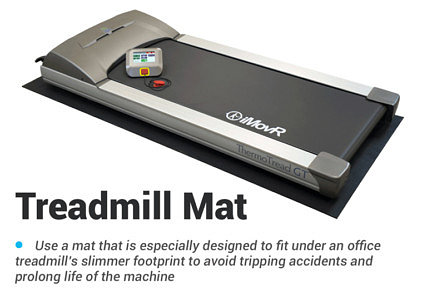

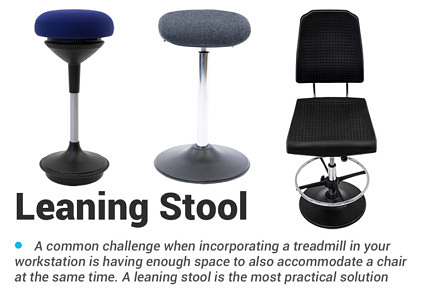
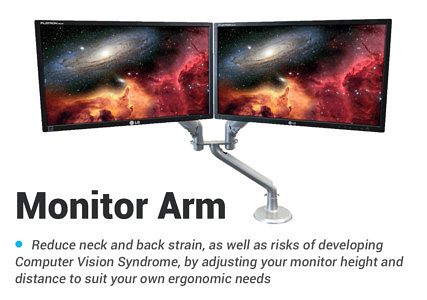
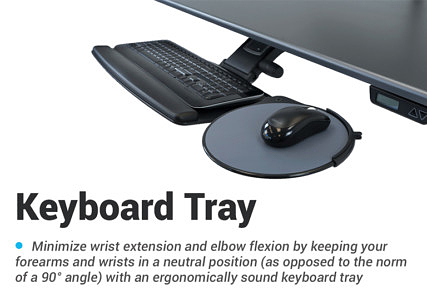
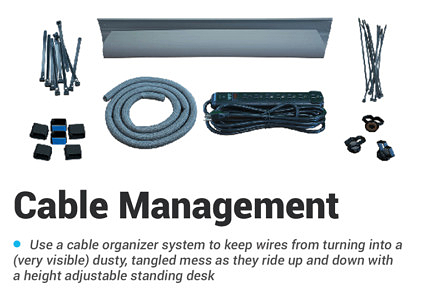
0 Comments
Leave a response >